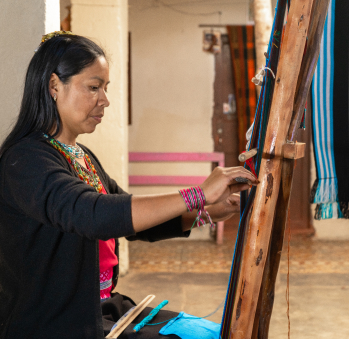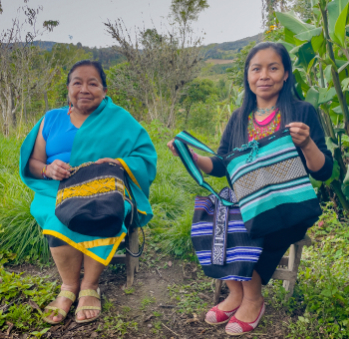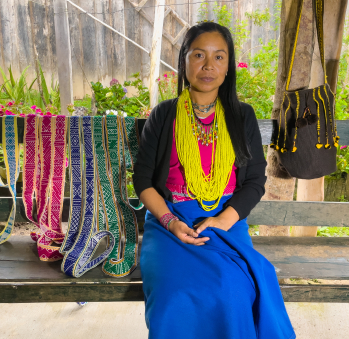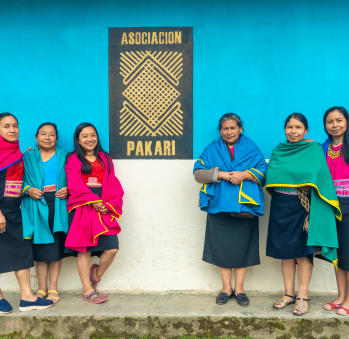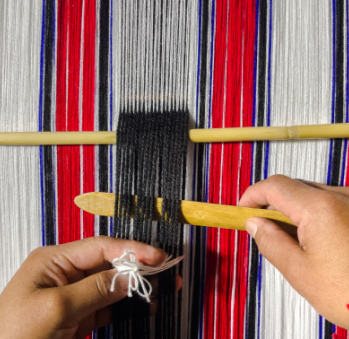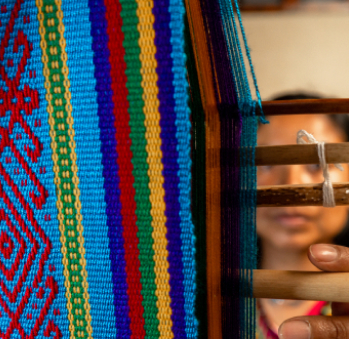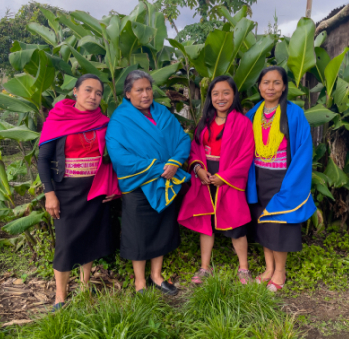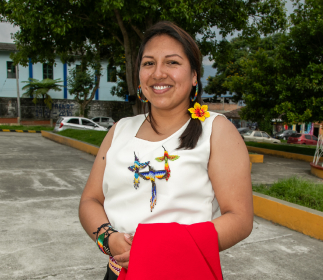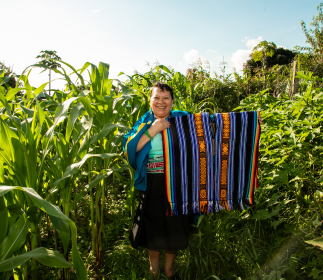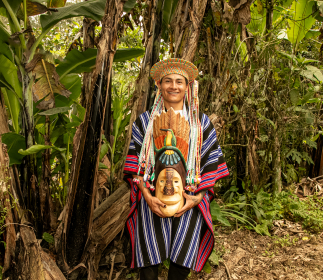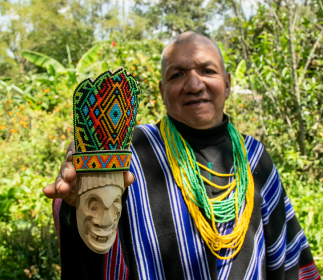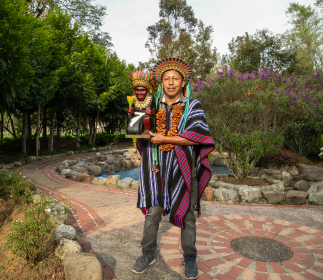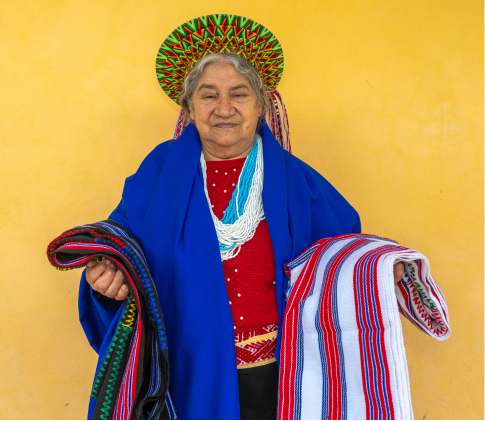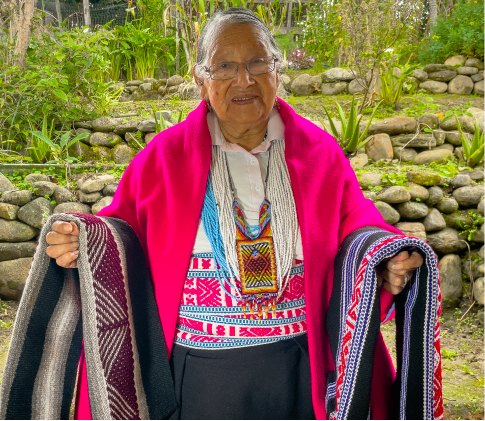Sandra Isabel Chasoy
Workshop: Taller Asociación Pakari
Craft: Tejeduría
Trail: Putumayo Route
Location: Colón, Putumayo
SCHEDULE YOUR VISIT
Calle 4 No.2-08 Barrio San Antonio, Colón
3216474296
ambiaia@yahoo.com
@ingas.pakari
Sandra lives in the town of Colón, in the Alto Putumayo. She belongs to the Inga indigenous community, of which 450 families —around 1,500 people— are members. She is a proud bearer of the weaving tradition that her mother, María Laura Chasoy, taught her. She started learning when she was barely six. She still remembers that her childhood was tough. When she was only nine years old, she violently lost her father. Because of this, her mother had to take care of her six children on her own.
Life started early in their house. She taught her children how to weave, gave them agua de panela or herbal tea, and made backpacks that she later exchanged for food. In spite of the difficulties they suffered, Sandra never felt she had to make a sacrifice. She was always honored to be able to join her mother and learn to think while weaving. She would sit next to her and, alongside other of the community’s mothers, she would take notes and record the drawings and symbols used in weaving. She learned how to make every stitch surrounded by the warmth of the tulpa, the stone hearth. She also recalls the life of the kitchen, the chagra, and the yagé medicinal beverage that exalted the colors of nature.
She gets intensely emotional when she recounts this past that now seems far removed. She knows that every ware she makes with her hands is valuable and has a profound meaning. Thus, whenever someone speaks of crafts with even a hint of scorn —as objects and practices that are superfluous or merely ornamental, for instance—, she starts telling the stories that surround her trade: the ones that tell of its beginnings, its life, its worth, and its history. She likes to recount how mothers and grandmothers used to tell their children that the weather could be foretold watching the rainbows’ —called Kuichi in their native language— shapes. If they payed attention, they could be warned early of floods to come or prepare for approaching summers and winters. She also explains the importance of women’s cores: their wombs. To effectively protect and celebrate them, almost 50 different symbols are woven into the belts that are worn around them.
Moreover, she tells us that we can gift woven hummingbirds to the people we love as a sign of friendship, and that ruanas confer lesser or greater authority to whoever wears them according to their color. In case any doubts remained surrounding these wares’ relevance, she describes how the local craftswomen fashion the colorful garments that are worn at the carnival of the traditional Atun Pucha festival. The latter celebrates the new Inga year a day before Ash Wednesday. These garments include the emblematic sash, the chumbe, the capisayo —which is another name for crown—, and the pacha.
Four of the Chasoy sisters —Myriam, Madgalena, Claudia América, and Sandra herself— still weave and continue to maintain their legacy to this day. Ten families established the Asociación Pacarí. They are in charge of preserving and promoting this weaving tradition; they chant the meaning of dawn, the most beautiful word.
Craft
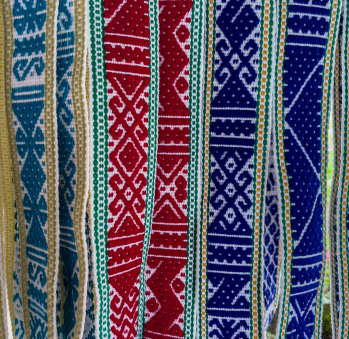





Artisans along the way
Artisans along the way
No puede copiar contenido de esta página








































